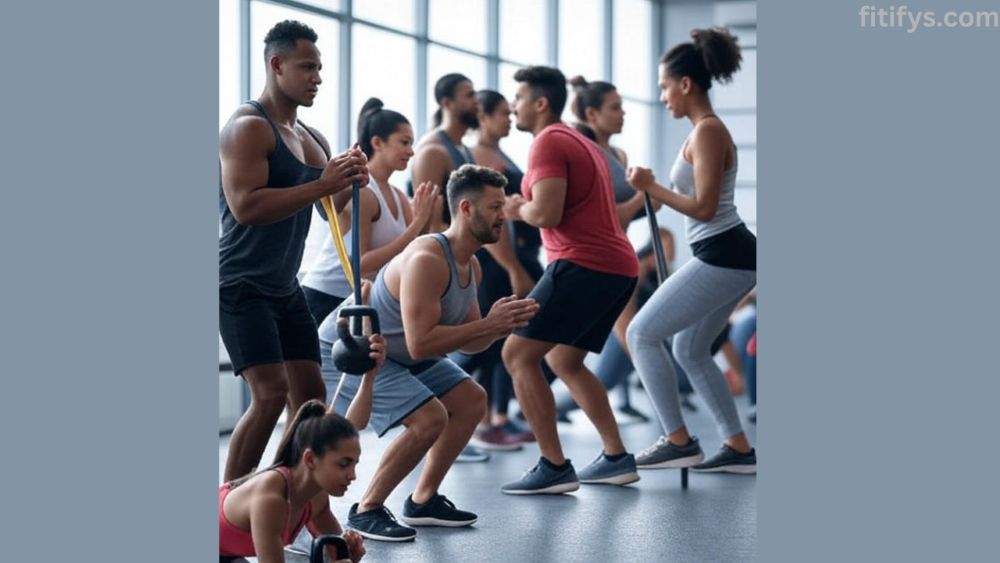Is Functional Training Worth the Hype? Here’s What You Need to Know
if you’ve been hearing the buzz about “functional training” and wondering whether it’s just another fitness fad or something that actually works. The term pops up in gym classes, fitness blogs, and even physical therapy sessions.
At Fitifys.com, we believe in cutting through the noise and helping you understand So let’s break it down—no fluff, no jargon, just real talk about functional training.

What Is Functional Training?
In simple terms, functional training is about exercises that help you move better in real life. Think lifting groceries, squatting to pick up a toddler, or climbing stairs without getting winded.
These workouts train your muscles to work together, improving balance, coordination, and strength in movements you actually use every day—not just in the gym.
How Is It Different from Regular Workouts?
Here’s the deal: Traditional strength training often focuses on isolating muscles—like doing bicep curls or leg extensions. Functional training, on the other hand, involves compound movements that use multiple muscle groups at once.
Examples include:
- Squats
- Lunges with twists
- Push-ups
- Kettlebell swings
- Planks
- Farmer’s carries
Instead of just getting stronger in one movement, you’re building strength and control that helps you in day-to-day life.
Why Everyone’s Talking About It
Functional training isn’t just for athletes or hardcore gym-goers. It’s for everyone—from busy parents and office workers to older adults and beginners.
Here’s why people love it:
- Improves posture and balance
- Reduces the risk of injury
- Boosts core strength
- Makes everyday tasks easier
- Burns calories and builds strength—at the same time
It’s a win-win for anyone who wants to move better and feel stronger without spending hours in the gym.
My First Functional Workout (And What I Learned)
I’ll be honest—I used to think working out meant pounding the treadmill or lifting heavy weights. Then one day, I joined a small group class that focused on bodyweight moves, kettlebell swings, and balance drills. I was sweating and laughing, and by the end, I felt more connected to how my body moved than I had in years.
The soreness the next day? It was real. But so was the sense that I was training for life, not just for looks.
What Does a Functional Workout Look Like?

Functional workouts are usually quick, efficient, and versatile. You can do them at the gym, at home, or even in your backyard.
Here’s a simple 30-minute routine:
Warm-up (5 mins):
- Arm circles
- Bodyweight squats
- Walking lunges
- Jumping jacks
Main Circuit (20 mins, repeat 2–3 times):
- 10 kettlebell swings
- 12 walking lunges (each leg)
- 10 push-ups
- 30-second plank
- 15 air squats
- 1-minute fast-paced walking or jumping rope
Cool-down (5 mins):
- Gentle stretching (hamstrings, quads, shoulders)
- Deep breathing
This workout hits your legs, arms, core, and cardio—all using functional movements that help in everyday life.
Who Should Try Functional Training?
Short answer? Almost everyone.
Functional training is great for:
- Beginners – It’s low-impact and easy to modify.
- Older adults – Helps improve balance and prevent falls.
- People with injuries – Often used in rehab programs.
- Busy folks – You get a lot done in a short amount of time.
- Athletes – Great for cross-training and injury prevention.
Can It Help with Weight Loss or Muscle Gain?
Absolutely. While functional training may not bulk you up like heavy bodybuilding workouts, it builds lean muscle, improves cardio health, and torches calories—especially when paired with HIIT (high-intensity interval training).
And since it often involves full-body movements, you get more calorie burn per minute. That’s a pretty sweet bonus.
Functional Training at Home: No Equipment? No Problem.
You don’t need a gym or expensive gear. Here are a few bodyweight-only moves that work great:
- Squats
- Glute bridges
- Push-ups (or wall push-ups)
- Plank with shoulder taps
- Step-ups (on a sturdy chair or step)
Do them in a circuit for 20–25 minutes, and you’ve got a solid, functional workout right in your living room.
Final Thoughts: Is It Worth the Hype?
If your goal is to feel stronger, move better, and stay active in everyday life—yes, functional training is 100% worth trying.
It’s not about lifting the heaviest weights or looking perfect. It’s about training in a way that supports your life outside the gym. Whether you’re chasing kids, sitting at a desk, or carrying groceries up three flights of stairs, functional training can make it easier—and keep you injury-free.
Want simple routines you can try today? Head over to Fitifys.com for beginner-friendly guides, quick workouts, and tips that actually work.
FAQs
1. Can I do functional training if I’m a beginner?
Yes! Functional training is great for beginners because it focuses on natural movements. Start with bodyweight exercises and build up gradually. You don’t need to be in shape to get started—you get in shape by starting.
2. How often should I do functional workouts?
Aim for 2 to 4 sessions per week, depending on your schedule and goals. Even two 20-minute workouts a week can make a big difference in how you feel and move.
3. Will functional training help with back pain?
It can! Many functional exercises strengthen your core and improve posture, which helps relieve and prevent back pain. Just make sure to start slow and use good form—or talk to a trainer or physical therapist if you’re unsure.







